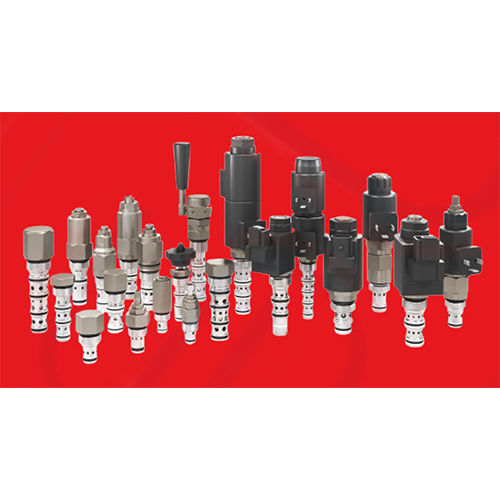Cartridge Valves
उत्पाद विवरण:
- स्ट्रक्चर
- मटेरियल
- पावर
- प्रेशर
- मीडिया
- काम करने का तापमान
- पोर्ट का आकार 1/8 to 1 BSP/NPT
- अधिक देखने के लिए क्लिक करें
X
उत्पाद की विशेषताएं
- Cylindrical
- Industrial, Hydraulic Systems
- 1/8 to 1 BSP/NPT
उत्पाद वर्णन
- Our cartridge valves are compact, economical components used to control direction, pressure up to 350 bar [5,000 psi], and flow up to 400 l/min [100 US gal/min].
- We offer over 450 cartridge valves including everything from simple check valves to high-precision proportional valves, and by combining these in a hydraulic integrated circuit (HIC), you can create a custom control manifold.
Versatile Application and Compatibility
Designed for a variety of media, including oil, air, and water, these screw-in cartridge valves cater to multiple hydraulic and industrial systems. The insert-type structure and compatibility with internal thread connections from 1/8 to 1 BSP/NPT make integration straightforward. Whether you require directional, pressure, or flow control, these valves deliver consistent performance in challenging environments.
Robust Construction and Reliable Sealing
Manufactured with high-grade stainless steel or brass, these cartridge valves offer exceptional durability and longevity. The availability of both Nitrile and Viton (Fluorocarbon) seals ensures optimal resistance to different fluids and temperature extremes. The polished or coated surfaces further enhance resistance to wear and corrosion, minimizing long-term maintenance needs.
FAQs of Cartridge Valves:
Q: How should I install screw-in cartridge valves with internal thread connections?
A: To install these valves, ensure the appropriate internal threaded port size (1/8 to 1 BSP/NPT) in your hydraulic or pneumatic manifold. Screw the cartridge valve in place, making sure the seal (Nitrile or Viton) is correctly seated for leak-free operation. Always consult the datasheet for recommended torque and follow standard safety practices during installation.Q: What media are compatible with these cartridge valves?
A: These valves are designed to operate with oil, air, or water. Seal material selection, such as Nitrile for general fluids or Viton for more aggressive media and higher temperatures, ensures compatibility with the intended application in various industrial and hydraulic systems.Q: When should I opt for Nitrile seals instead of Fluorocarbon (Viton) ones?
A: Choose Nitrile seals for general hydraulic fluids and air at standard temperature ranges (-20C to +80C). For applications involving higher temperatures, aggressive chemicals, or where superior resistance is required, Fluorocarbon (Viton) seals are recommended for enhanced durability.Q: Where can these cartridge valves be mounted within a system?
A: Thanks to their design, these valves can be mounted in any position within your hydraulic or pneumatic system. Their flexibility allows integration into compact or complex layouts, giving engineers greater installation freedom without compromising functionality.Q: What is the process for maintaining these cartridge valves?
A: Maintenance is straightforward due to their easy-access design. Regularly inspect the cartridges for signs of wear or contamination, replace seals as needed, and follow guidelines from the datasheet for cleaning or servicing. Their robust build minimizes the frequency and complexity of maintenance tasks.Q: How do these valves benefit industrial applications in India?
A: These cartridge valves offer rapid response, durable performance under high pressure (up to 350 Bar), and adaptability for varied industrial setups. Their wide temperature tolerance, choice of materials and seals, and simple installation process help increase operational efficiency and reduce downtime for industrial users and suppliers across India.Tell us about your requirement

Price: Â
Quantity
Select Unit
- 50
- 100
- 200
- 250
- 500
- 1000+
Additional detail
मोबाइल number
Email




 मुझे निःशुल्क कॉल करें
मुझे निःशुल्क कॉल करें
